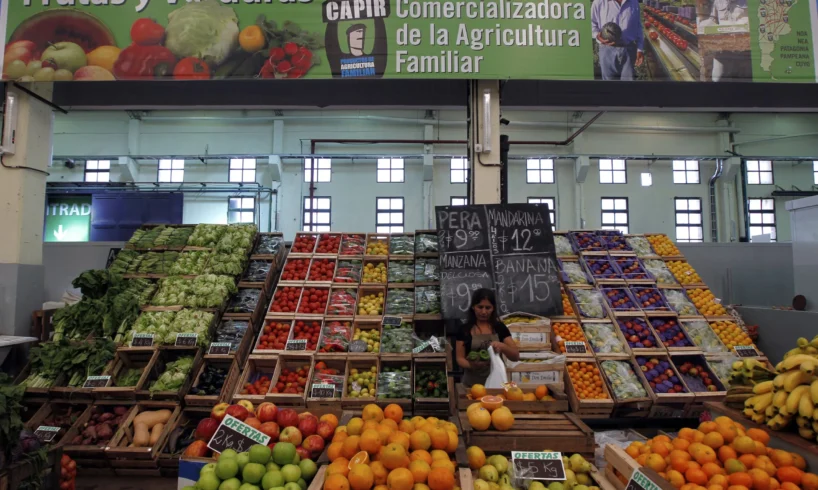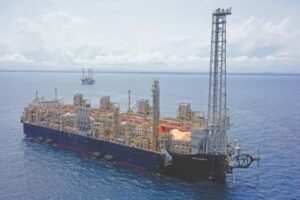
Latin America’s per capita income will grow by 1.8% annually over the next decade, according to the OECD–FAO Agricultural Outlook 2024–2033.
This growth rate exceeds the global average of 1.6% and will act as a key driver of food demand, especially for animal products and higher-value processed foods.
For global food producers and agri-traders, this presents both market opportunities and logistics challenges. Rising income means changing diets.
As consumers across Brazil, Mexico, Argentina, and Colombia gain purchasing power, demand for meat, dairy, and packaged foods will rise.
This shift directly supports agricultural growth across the region, where key exports already include soybeans, maize, beef, poultry, fruit, and coffee.
The OECD expects global food production to increase by 14% by 2034, with nearly half of that driven by developing and emerging economies.
Income Gains Position Latin America as a Pillar in Future Food Supply. (Photo Internet reproduction)
India and Southeast Asia will account for 39% of the expected global food consumption growth, but Latin America’s expanding middle class will also influence trade flows.
As consumption grows, Latin America will likely consolidate its role as one of the world’s top food-exporting regions. However, to meet rising demand, the region will also need to expand productivity by 15% while reducing emissions by 7%, according to OECD and FAO targets.
The report projects that 22% of global food production will cross borders before reaching final consumers. This makes stable international trade flows essential.
Countries in Latin America must improve infrastructure, standards, and trade procedures to meet global demand consistently while reducing price volatility.
This is particularly important as global agricultural supply chains remain under pressure from energy costs, climate variability, and input price inflation.
Latin America: Major Agricultural Exports & Economic Outlook (2025)
Country
GDP Growth (%)
Inflation (%)
Major Agricultural Exports
Outlook Notes
Argentina
~1.8
2.7–5.0
Soybeans, Maize, Beef
Rebounding from contraction, fiscal challenges remain.
Brazil
~1.8
2.1
Soybeans, Poultry, Coffee
Leading global agri exporter, growth driven by demand.
Chile
~1.7
2.4
Fruit, Wine, Fish
Industrial recovery and strong external demand.
Colombia
~1.6–1.8
2.5
Coffee, Flowers, Bananas
Investment rebound, facing inflation pressures.
Costa Rica
~2.0
4.0
Bananas, Pineapples
Strong services sector and steady agri expansion.
Dominican Rep.
~2.2
5.2
Sugar, Cocoa, Bananas
Rapid post-pandemic recovery, strong productivity.
Ecuador
~1.7
1.2–1.6
Bananas, Shrimp, Flowers
Fiscal constraints, modest growth.
Mexico
~1.6
0.4
Avocados, Tomatoes
Growth slows due to US trade policy, exports vital.
Panama
~2.0
~2.5
Fish, Bananas
High per capita gains past decades, logistic strengths.
Paraguay
~1.7
3.8
Soybeans, Beef
Agro-driven growth, energy exports growing.
Peru
~1.8
3.0
Coffee, Asparagus, Fish
Fiscal consolidation, rising food productivity.
Uruguay
~1.8
~2.5–3.0
Beef, Soybeans, Dairy
Stable export-driven growth, efficient agri sector.
Venezuela
N/A
5.0
Oil, Coffee (declining)
Volatile, forecasts uncertain due to policy shifts.
Projected Regional Annual Growth Rates (2024–2034)
Region
Projected Annual Growth (%)
Latin America & the Caribbean
1.8%
Global average
1.6%
India
5.4%
China
3.8%
Southeast Asia
2.9%
North America
1.5%
Europe & Central Asia
1.5%
North Africa & Middle East
1.3%
Sub-Saharan Africa
1.1%





